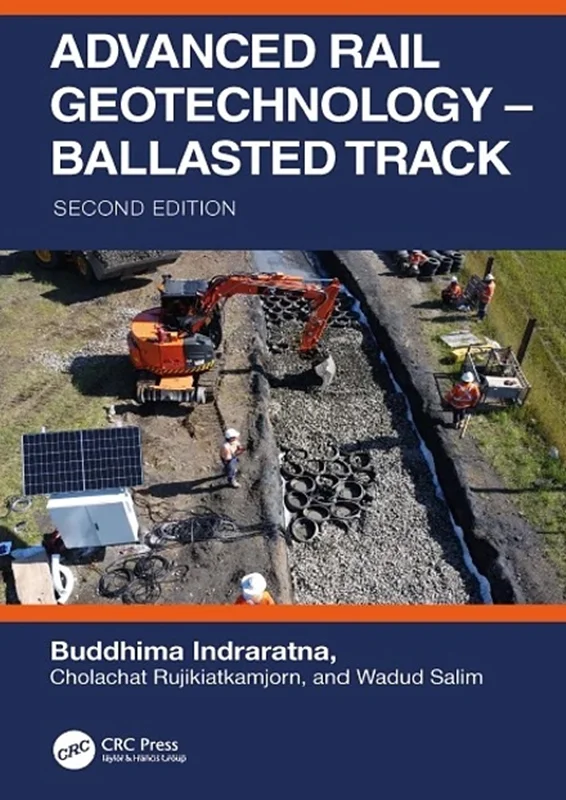Advanced Rail Geotechnology – Ballasted Track 2nd Edition
Buddhima Indraratna, Cholachat Rujikiatkamjorn, Wadud Salim, B0C8HXYS1F, 1032244917, 9781032244914, 978-1-032-24491-4, 978-1032244914, 978-1-032-24494-5, 978-1032244945, 9781032244945, 978-1-003-27897-9, 9781003278979, 978-1003278979
Ballast plays a vital role in transmitting and distributing the train wheel loads to the underlying track substructure. The load-bearing capacity, safe train speed, and the levels of noise and vibration, as well as passenger comfort depend on the behaviour of ballast through particle interlocking and the corresponding deformation of this granular assembly. Attrition and breakage of ballast occur progressively under heavy and continual cyclic loading, causing track deterioration and rail misalignment affecting safety, while exacerbating the intensity of track maintenance. In the absence of realistic computational models, the track substructure is traditionally designed using mostly empirical approaches.
In this book, the authors present the detailed information on the strength, deformation, and degradation aspects of fresh and recycled ballast under monotonic, cyclic, and impact loading using innovative geotechnical testing devices. A constitutive model for ballast incorporating particle breakage is presented representing a more realistic stress–strain response. The mathematical formulations and numerical models are validated using controlled experimental simulations and fully instrumented field trials. Revised ballast gradation is described to provide greater track resiliency and extended longevity. The book also provides a detailed description of geosynthetics for substructure improvement considering track deterioration caused by particle degradation, fouling, and impeded drainage. New to this second edition are extensive discussions on subgrade soil stabilisation, causes and mechanisms of soil fluidisation (mud pumping) under cyclic loading, and preventive and remedial measures to alleviate undue instability of ballast tracks.
This book should prove most beneficial for final-year civil engineering students and for postgraduate teaching and learning. It is an ideal supplement for practising railway engineers and researchers engaged in the challenging tasks of future track design for heavier and faster trains.


